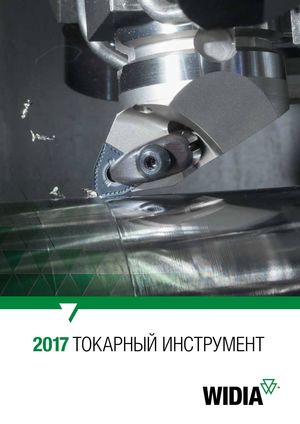Общий каталог Widia 2017 - страница 596
Навигация
- Table of Contents
- Turning
- Turning • ISO Inserts
- Turning • Tools for External Turning and Internal Boring
- Turning • Tools for External Turning and Internal Boring
- Turning • Tools for Small Hole Boring
- com E1Turning • Grooving and Cut-Off
- Turning • Threading
- Indexable Milling
- Indexable Milling • Face Mills
- Indexable Milling • Chamfer Mills
- Indexable Milling • 90° Shoulder Mills
- Indexable Milling • Helical Mills
- Indexable Milling • Slotting Mills
- Indexable Milling • Copy Mills
- Solid End Milling
- Solid End Milling • High-Performance Solid Carbide End Mills
- Solid End Milling • General Purpose Solid Carbide End Mills
- Solid End Milling • High-Performance High-Speed Steel (HSS-E/PM)
- Solid End Milling • Burs
- Holemaking
- Holemaking • High-Performance Solid Carbide Drills
- Holemaking • Modular Drills
- Holemaking • Indexable Drills
- Holemaking • Modular Drills
- Holemaking • Indexable Drills
- Holemaking • Hole Finishing
- Tapping
- Tapping Portfolio
- Index by Order Number
- Index by Catalogue Number
- Global Contacts
- Informational Icons Guide
- Material Overview • DIN

Separator™ Technical Recommendations • Separator Cut-Off System (continued) Eliminate built-up edge: Eliminate chatter: • Select proper grade for insert. • Minimise tool blade and holder overhang. • Increase speed (RPM). • Minimise part overhang. • Increase the feed rate. • Use strongest toolholder system. • Use ample amounts of well-directed coolant • Use a more narrow width of insert. (see Figure A on page E131). • Chipbreaker might be too aggressive. (Call Technical Support.) • Adjust speed and feed rate up or down. • Hold workpiece rigidly. • With a longer part, support with steady rest or live centre. • Avoid machine dwell. • Use S2 or X2 to reduce cutting forces. Chamfer and cut-off operations: • Use Separator S2 or X2. • Groove or breakdown workpiece surface being machined. • Machine the chamfer. • For jobs requiring a chamfer on both ends of the part, begin by plunging to a depth just beyond the depth of the chamfers. Then, return to the part O.D. and profile each chamfer individually. Finish the cut-off after completion of the second chamfer. • Cut off the workpiece (see Figure C). Reduce cut-off nib on solid bar or I.D. bur on tubing: • Check tool height. Insert cutting edge should be on centre to 0,05mm above centreline of workpiece. • To reduce nib on part, use a high lead angle-type insert. Lead angle on a cut-off insert reduces the nib, which remains on the workpiece. CAUTION: the higher the lead, the more tool-side deflection. Figure C • Use the narrowest possible cut-off insert to minimise the cut-off bur length. • Reduce feed rate at the end of a cut. • On most tubing-type parts, a 4° or 5° lead angle will be sufficient. • Add support to a long slender-type part. • Maintain proper sub-spindle alignment. • If nib or bur persists, call Technical Support about reducing hone size. • Use small- or no-corner radius. E132 widia.com
 Каталог Widia токарный инструмент 2017
Каталог Widia токарный инструмент 2017 Каталог Widia трохоидальное фрезерование
Каталог Widia трохоидальное фрезерование Каталог Widia техническое руководство по разверткам
Каталог Widia техническое руководство по разверткам Каталог Widia фрезы со сменными пластинами 2016
Каталог Widia фрезы со сменными пластинами 2016 Каталог Widia достижения 2020
Каталог Widia достижения 2020